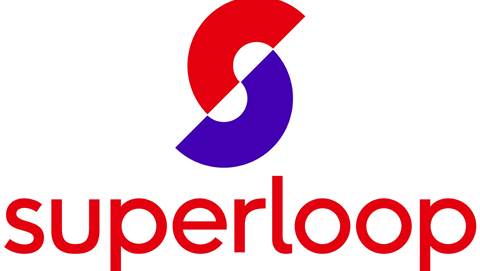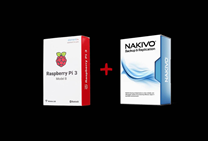NBN Co is set to unveil a 50Mbps residential product before the end of the year that comes bundled with enough bandwidth to be uncongested during peak periods.
But CEO Bill Morrow warned users not to expect any “drastic” change in current and future service prices, because the company remains beholden to recovering its costs and a modest profit.
NBN Co and its retail service providers (RSPs) are currently involved in a major review of NBN Co’s pricing construct. The process is being closely watched by government and regulators.
Morrow last night discussed a range of options that have been considered but indicated that one, in particular, had emerged as a frontrunner.
“I’ll be open with you - we’re looking at how can we incentivise people to move up higher on the speeds than the 12Mbps and 25Mbps that are the most dominant products out there,” Morrow told a senate estimates hearing.
“We’d love people to be on 50Mbps. We think the 50Mbps plan is a good one. We think it satisfies almost every application and need of households that are out there today.
“There might be some exceptions but again we have higher price points for that.
“If we can do something to ... have a far more attractive price that gives you a 50Mbps speed product, and we have some inclusive CVC [connectivity virtual circuit] that comes with that, now we’re talking.
“What we’re focused on now is how can we massage all this to make sure it works.”
CVC is a usage-based charge that is widely considered to be the customer experience bottleneck on the NBN.
The current model encourages RSPs to buy a minimal amount per user per month, leading to congestion during peak times and a poor user experience that is threatening to derail NBN Co’s take-up targets and therefore its business model.
Although NBN Co has discounted the CVC fee over the past two years, it has managed to encourage only a minor increase in the amount of CVC per user being purchased.
This has led to the current price construct discussions.
Morrow said back in July that it would cost RSPs - and therefore end users - $5 a month more to double the amount of CVC bought for each end user on the network from 1Mbps to 2Mbps.
It was unclear under the model being workshopped how much CVC NBN Co would bundle with the planned 50Mbps product.
However, Morrow said the amount of bundled CVC would be at a level where “the RSP does not have to worry about all of the algorithms and robots that people are trying to develop to manage the customer experience”.
It would also be at a level that afforded RSPs “a bit of safety and freedom that they can get customers onto the NBN and they won’t be congested at busy hours.”
Further discussions on the plan are currently underway with RSPs.
“An announcement will come out that explains our intent by the end of the year,” Morrow said.
“We hope to have something in the first half of next year that will be part of the new product. We hope to bring benefit to the RSPs and end users in a way that’s still positive for the NBN and have an impact soon.”
$52 ARPU remains
A major limitation in the price construct consultation has been NBN Co’s requirement to grow its average revenue per user (ARPU) to $52 by 2021, as laid out in the corporate plan.
ARPU is currently a stagnant $43 per user per month. This is drawn from a basic wholesale cost per service along with the CVC being purchased by RSPs.
Growth in ARPU is needed in order for NBN Co to recover its operating costs as well as achieve an internal rate of return (IRR) for its government shareholders.
While that IRR - and NBN Co’s ability to turn a profit - look decidedly shaky after this week, NBN Co said it still has to continue trying to meet those requirements through any revised pricing construct it comes up with.
Morrow warned users not to expect a large magnitude price shake-up, given the circumstances.
“Is it a complete pricing revamp where everything’s off the table and it’s half the price of what we’re offering today? No, it’s not going to be,” he said.
“These are evolutionary steps that we are taking with pricing.
“We want to be bold, we want to solve the concerns out there today while we are still able to pay for this network. In terms of the rates that are out there [now for DSL], this is not that kind of magnitude of change.”
Morrow said NBN Co had looked at whether it could emulate the New Zealand model of a flat monthly access fee, albeit set at $52 per user per month.
“We could simplify our life just by saying you know what, let’s put one price point out there, you get as much bandwidth as you want, an all-you-can-eat model, let’s say $52 for that and go for your life,” he said.
“The problem with that is it defeats the purpose NBN originally stood for and I believe stands for today that everyone in this nation should have broadband.”
Morrow indicated concerns that the price could exclude large enough numbers of people to alter NBN’s economics.
That appears to be the same rationale that has all but ruled out the canning of the 12/1Mbps baseline product, a prospect raised back in August.
Morrow said NBN Co still had an obligation to give people “a speed and product they can afford”, noting not everyone would be able to pay for a service with a flat-fee wholesale structure
A service that handed NBN Co $52 a month would have to cost somewhere north of $72 a month for end users (given what we know about average margin from at least one sizable RSP).
Morrow indicated the network builder was worried that would cut into its expectations of achieving a take-up rate of between 73 and 75 percent.
“I’ll say right now that’s the least interesting option, to have a one price, all-you-can-eat plan that goes out there,” he said.
ARPU inflation
One of the more intriguing revelations from last night's senate estimates is how much of NBN Co’s ARPU is tied to meeting its obligations under the definitive agreements with Telstra (and to a lesser extent, with Optus).
As NBN Co’s business model has been fiercely criticised this week, one of the criticisms raised repeatedly has been the decision to set up an entirely new telco rather than have an incumbent own the project.
Morrow last night revealed the cost of that decision in real terms is an extra $15 per user per month that NBN Co has to recover through its ARPU.
“If we could have lower costs we would. Unfortunately the hand was dealt us before we arrived here,” he said.
“I can tell you we’ve done the analysis that monies that we pay to Telstra equate to $15 a month per customer that we have to recover.”
Most of that $15 is tied up in the cost of long-term leases for infrastructure access to ducts and rack space in Telstra exchanges, although a proportion is the money paid to Telstra and Optus to migrate their customers over to the NBN.
“The agreements that were put in place to originally set up NBN back in 2011 and that were then revised - though not financially - a few years later, embedded in the business three main costs,” chief financial officer Stephen Rue said.
“One cost was for leasing dark fibre, ducts, and exchange racks. The second was an embedded cost which is a per subscriber payment as people disconnect from the Telstra network and move onto the NBN, and the third one is an equivalent although slightly different calculation for Optus.
“If those three payments didn’t exist, to get the same rate of return as we have in our [corporate] plan we could have $15 less ARPU.
“In other words, per month, we would charge the retailers [$15 less]. What the retailers choose to do of course is up to them but we could charge them $15 less per month.”
By having no infrastructure of its own, NBN Co’s starting cost was higher than in countries where an incumbent - or a structurally separated portion of one - had been put in charge of an NBN-like project.
“This is why the US, UK, Germany and NZ can build out cheaper because these costs have been something that’s been on their balance sheet for 20-40 years,” Morrow said.
“The cost has been mostly or fully recovered and I believe - now this is just speculation, I don’t have the facts on this - but this is why Telstra when they submitted their bid to do this they could have done it cheaper because they don’t need to pay themselves that sort of money.
“This is just a fact. It’s not whether it’s good or bad, but when we get asked why are we more expensive we want to explain this and be quite open and transparent.
“It isn’t an issue of us just wanting to jack up the charges and make consumers pay more.”
Without its own infrastructure, however, Morrow acknowledged there was no feasible way for NBN Co to avoid the long-term charges.
“Not unless we go build our own ducts,” he said, before adding “which is not feasible.”




















